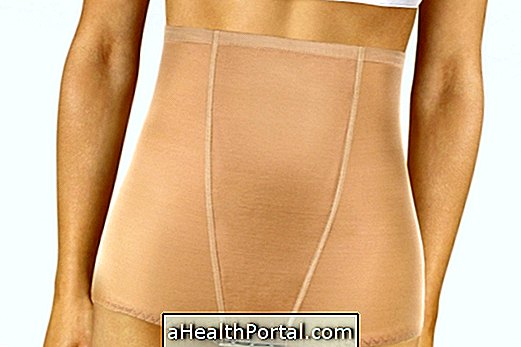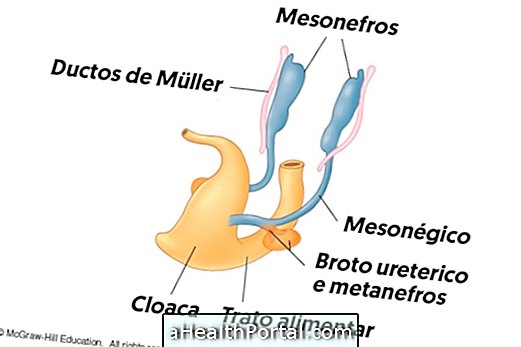Abdominoplasty is a plastic surgery in the belly to remove fat and excess skin and like any surgery there are always some risks that are even greater when this surgery is performed combined with others like liposuction or mammoplasty for example. Learn how surgery is done in: Tummy Tuck.
Main risks and how to solve each one of them
The main risks of abdominoplasty include:
1. Accumulation of fluid in the scar
It is called seroma, the fluid accumulation exactly at the scar site, which usually arises when the person does not use the strap, which makes the body more difficult to drain excess fluids naturally produced after plastic surgery.
- What to do: You should wear the brace for as long as your doctor tells you to, which is usually 2 months, and during that time the brace should be taken only for a shower and then placed again. You should also walk with your torso leaning forward and always sleep on your back.
In addition, you should also do about 30 sessions of manual lymphatic drainage to completely eliminate excess fluids. It is normal at first to get a larger amount of fluid, which can be seen with the naked eye, but over time the amount will decrease, but even so the result of surgery will be better after these 30 sessions.
2. Scar or overweight skin scar
This is closely linked to the surgeon's experience, and the more experience he has, the less likely he will be to have an ugly or highly visible scar.
- What to do: It is recommended to choose a good plastic surgeon, recommended by people close to you who have already performed the procedure and it is essential that you be accredited by the Brazilian Society of Plastic Surgery, if this procedure is performed in Brazil.
3. Bruising in the abdomen
It is most common when abdominoplasty and liposuction are performed together, because the passage of the cannula under the skin can break small blood vessels that allow it to overflow, forming the purple marks that become very visible in the skin of some people.
- What to do: It is normal for the body itself to eliminate the purple marks due to liposuction, but the doctor may prescribe some ointment to apply in the most painful places.
4. Formation of fibrosis
Fibrosis is when a hardened tissue forms where the liposuction cannula has passed and is a form of body defense. This hardened tissue can form an appearance of small elevations in the abdomen, compromising the outcome of plastic surgery.
- What to do: To avoid lymphatic drainage after surgery is essential, but after this tissue has already been formed, it is necessary to treat with dermatofunctional physiotherapy, with devices such as micro-currents, radiofrequency and manual therapy to standardize the skin and break down the sites of fibrosis.
5. Surgical wound infection
This is a rarer complication of plastic surgery, which occurs when the doctor, nurses or patient did not have the necessary hygiene to care for the scar, allowing the entry and proliferation of germs. The site should form pus and smell strong, compromising the outcome of the surgery.
- What to do: If the site of the cut is reddish, with pus or bad smell should go to the doctor as soon as possible to resolve the infection with the use of antibiotics.
See in the following video how to feed to improve your healing:

6. Loss of sensitivity
It is very common after any surgery that the person has a lower sensitivity of the skin to the touch in the places near the scar and where the liposuction cannula has passed. However, as the months pass, the sensitivity returns to normal.
- What to do: massage in less sensitive places is a good strategy to solve this problem, and can be done with techniques such as kneading, pinching, small pat or temperature variations, for example.
7. Thrombosis or pulmonary embolism
These can be the most serious complications of any surgery and happen when a blood clot forms inside a vein and then passes through the blood vessels and reaches the heart or lungs, preventing air from entering the site.
- What to do: to avoid it, the woman should stop taking contraceptives 2 months before surgery and after the operation she should take the anticoagulants, such as Fraxiparin 8 hours after surgery, for at least 1 week and always move her feet when lying down or sitting during the rest period. To prevent thrombosis and other bleeding you should also stop taking certain natural and pharmacy remedies before surgery. See which are these remedies you can not take before abdominoplasty.
Warning signs to go to the doctor
It is recommended to go to the doctor if you have the following signs or symptoms:
- Difficulty in breathing;
- Fever;
- The pain does not go away with the analgesics indicated by the doctor;
- Have the bandage completely stained with blood or have yellow or wet color;
- Have the drain full of liquid;
- Feeling pain in the scar or if it smells bad;
- If the surgery site is hot, swollen, red or sore;
- He is pale, weak, and always tired.
It is vital to consult your doctor because you may be developing a serious complication that could endanger the safety and life of the patient.





















